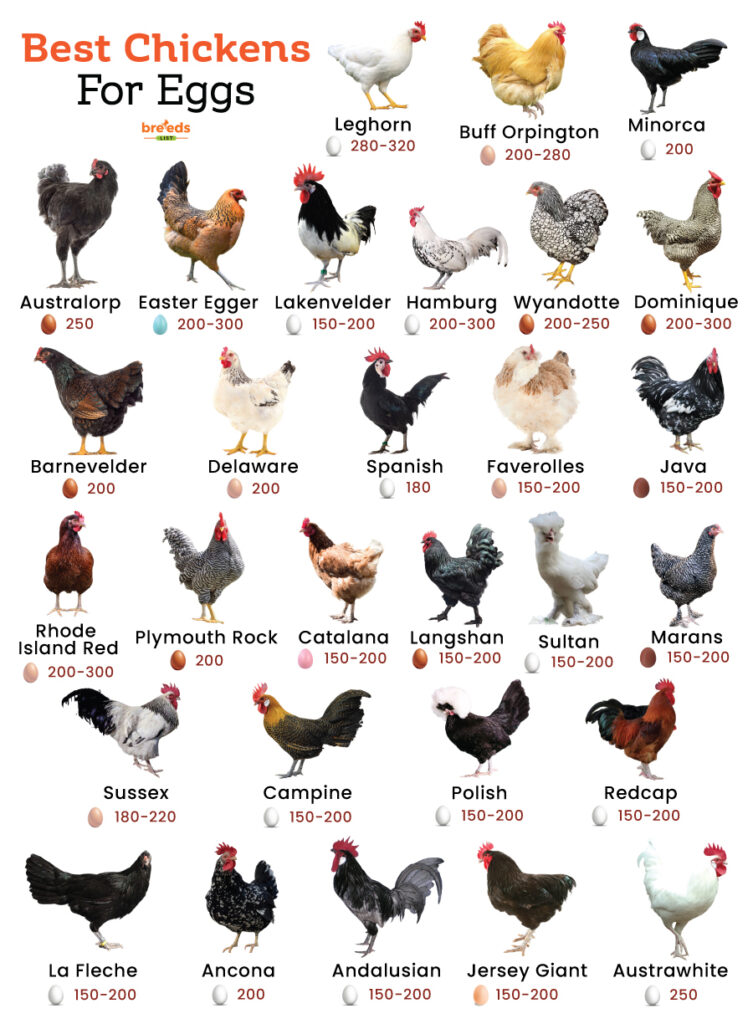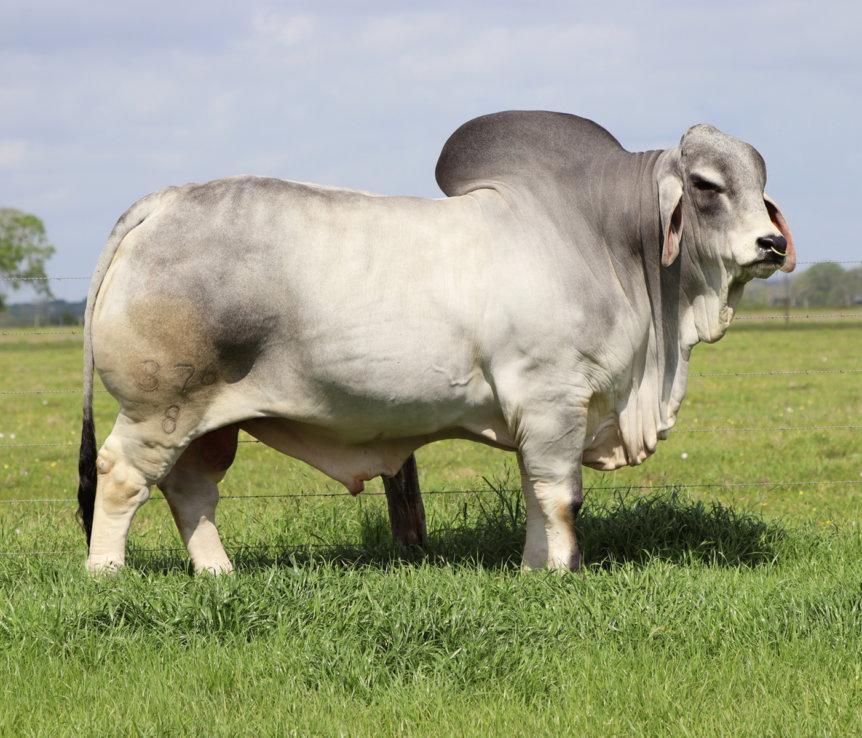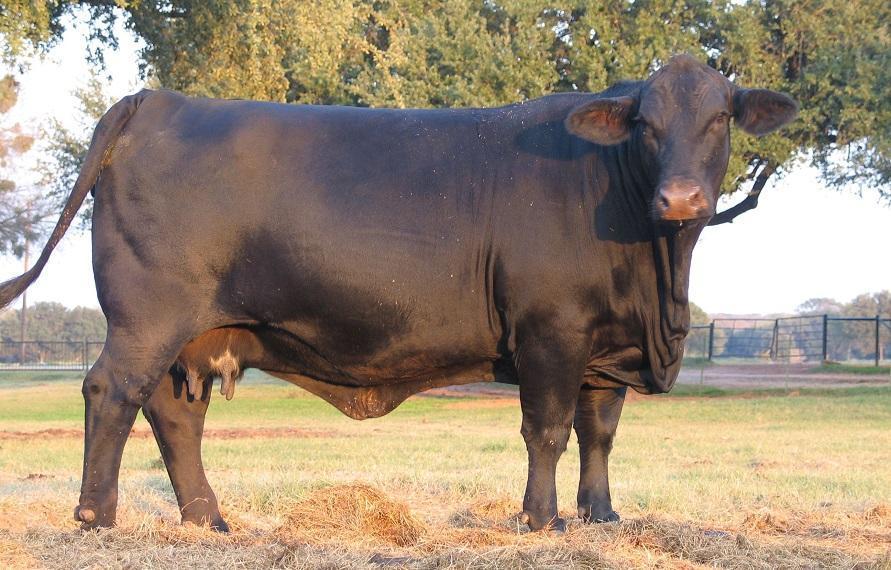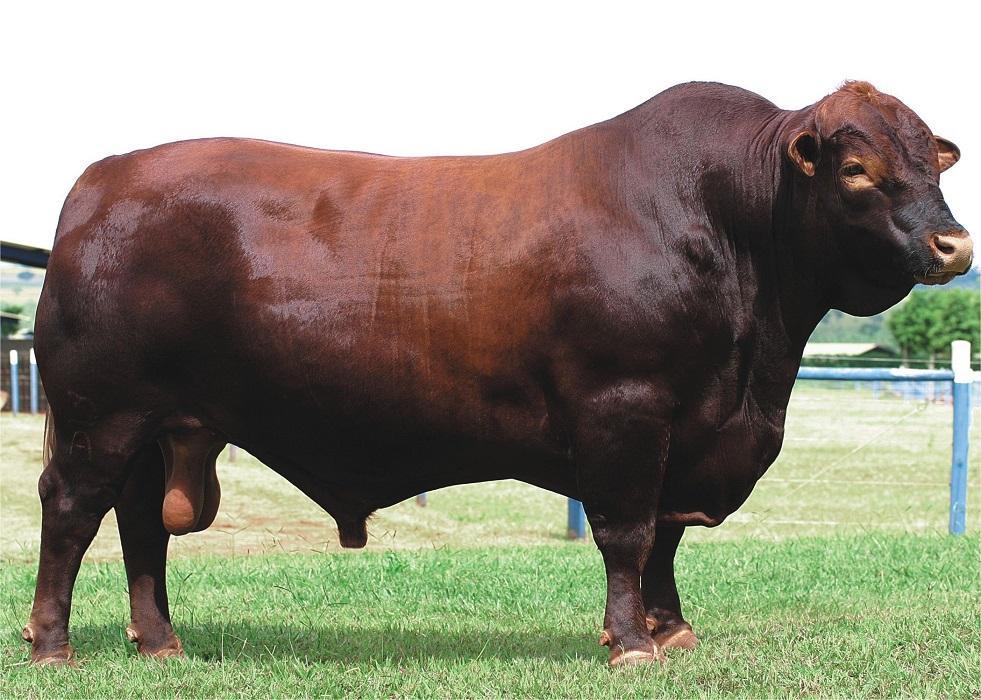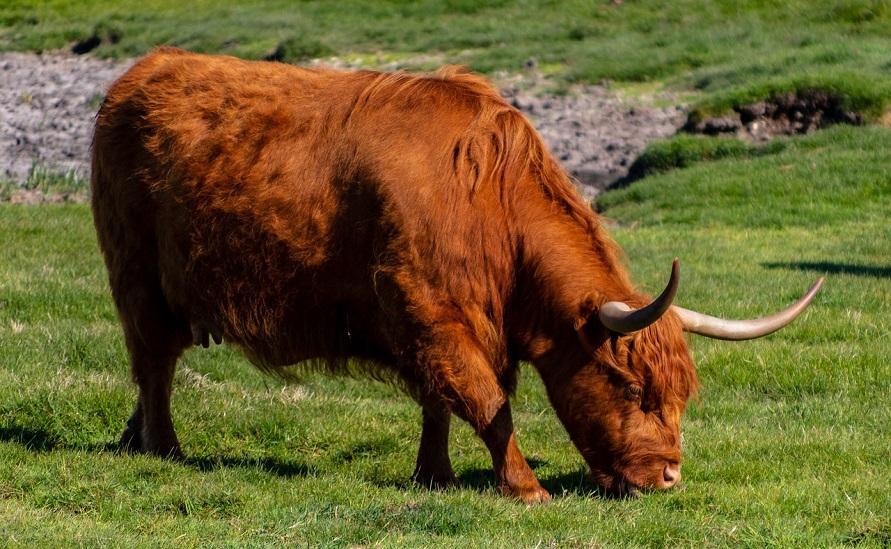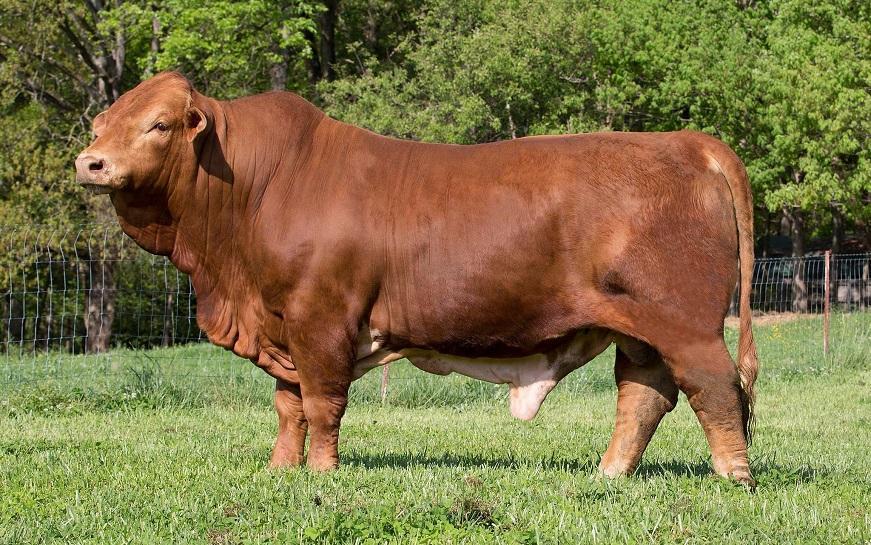Best Egg Laying Chickens
Not all chickens are meant to serve the same purpose. So, randomly choosing a breed with the hope it would be a mass egg layer might backfire spectacularly. For instance, Silkies are ornamental breeds that don’t lay eggs regularly.
Chickens reared solely for egg production are usually lighter than those raised for meat and generally need less feed. Also, meat chickens are usually butchered after 6-7 weeks, while egg-layers can remain highly productive for 2-4 years before declining gradually. Some, like the Plymouth Rock, can lay eggs at a high rate for up to a decade.
List of the Best Chicken Breeds For Eggs
| Breed | Number of Eggs Produced (Annually) | Egg Color | Egg Size |
|---|---|---|---|
| Leghorn | 280-320 | White | Large |
| Australorp | 250 | Brown | Medium to Large |
| Austrawhite | 250 | White or Cream-colored | Large |
| Rhode Island Red | 200-300 | Light Brown | Medium to Large |
| Dominique | 200-300 | Brown | Small to Medium |
| Easter Egger | 200-300 | Blue, Green, or Olive | Medium |
| Hamburg | 200-300 | White | Medium |
| Buff Orpington | 200-280 | Light Brown | Large |
| Plymouth Rock | 200 | Brown | Large |
| Minorca | 200 | White | Large |
| Delaware | 200 | Light Brown | Large |
| Barnevelder | 200 | Brown | Large |
| Wyandotte | 200-250 | Brown | Large |
| Ancona | 200 | White | Large |
| Sussex | 180-220 | Light Brown | Large |
| Spanish | 180 | Chalk-white | Large |
| Marans | 150-200 | Dark Brown | Large |
| Andalusian | 150-200 | White | Large |
| Campine | 150-200 | White | Medium |
| Catalana | 150-200 | Light Pink to White | Medium |
| Faverolles | 150-200 | Light Brown to Pinkish | Medium |
| Java | 150-200 | Tinted to Dark Brown | Large |
| Jersey Giant | 150-200 | Dark Brown to Light Cream | Large |
| La Fleche | 150-200 | White | Large |
| Lakenvelder | 150-200 | Tinted to White | Medium |
| Langshan | 150-200 | Different shades of Brown; sometimes Pale Purple shading | Large |
| Polish | 150-200 | Mainly White, but sometimes Cream or Tinted | Small |
| Redcap | 150-200 | White | Large |
| Sultan | 150-200 | White | Medium |
Best Egg-laying Chickens for Beginners
Choosing an easy-to-manage and docile chicken breed is essential for beginners. While not all the breeds mentioned above are suitable for someone just starting out, the following are some great choices for establishing a backyard flock.
- Rhode Island Red
- Wyandotte
- Ameraucana
- Australorp
- Marans
- Sussex
Initially, it’s best to keep a small flock of about 5-8 birds, as any more might be a bit harder to handle.
FAQs
Hens do not need a rooster to lay eggs. However, without a rooster, the eggs will be unfertilized and will not develop into chicks. So, a rooster is only necessary if the goal is to have fertilized eggs for hatching.
On average, most hens start to lay eggs in 18-24 weeks. But some, like the Australorp and the Leghorn, can start even earlier at around 16 weeks.
To produce eggs at a decent rate, hens need a diet that includes proteins, vitamins, and minerals. Being omnivorous, chickens can eat fruits, vegetables, grains, and insects. Additionally, they require two essential types of grit: crushed oyster shells, which are crucial for strong eggshell formation, and flint, which aids in their digestion.
Some of the best heat-resistant chicken breeds include Anconas, Andalusians, Catalanas, Leghorns, and Minorcas.
Most chickens thrive in colder temperatures, but extreme cold may hamper their egg-laying capabilities. Nevertheless, breeds like Wyandottes, Australorps, and Rhode Island Reds have high egg yields even in chilly weather.

